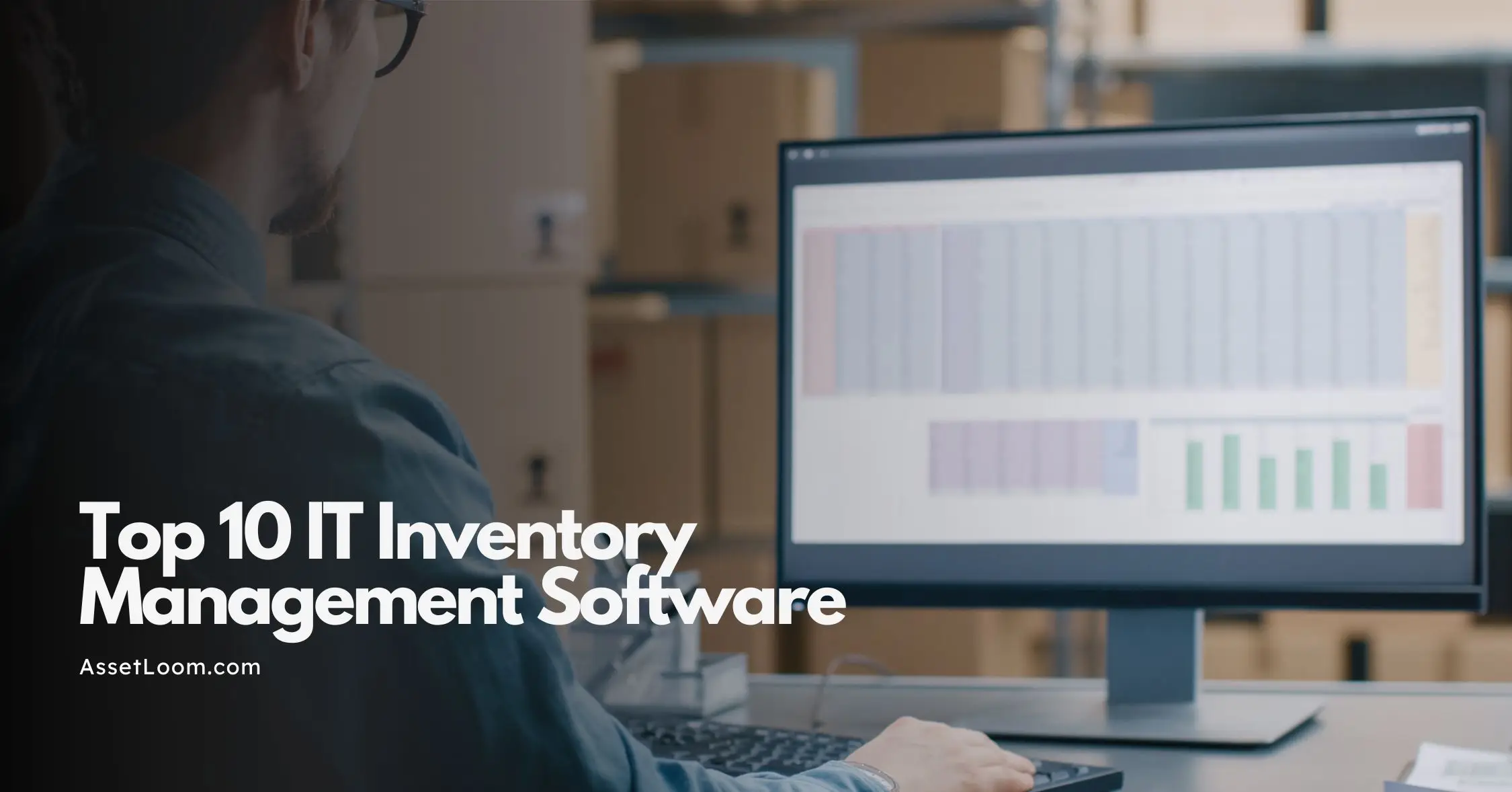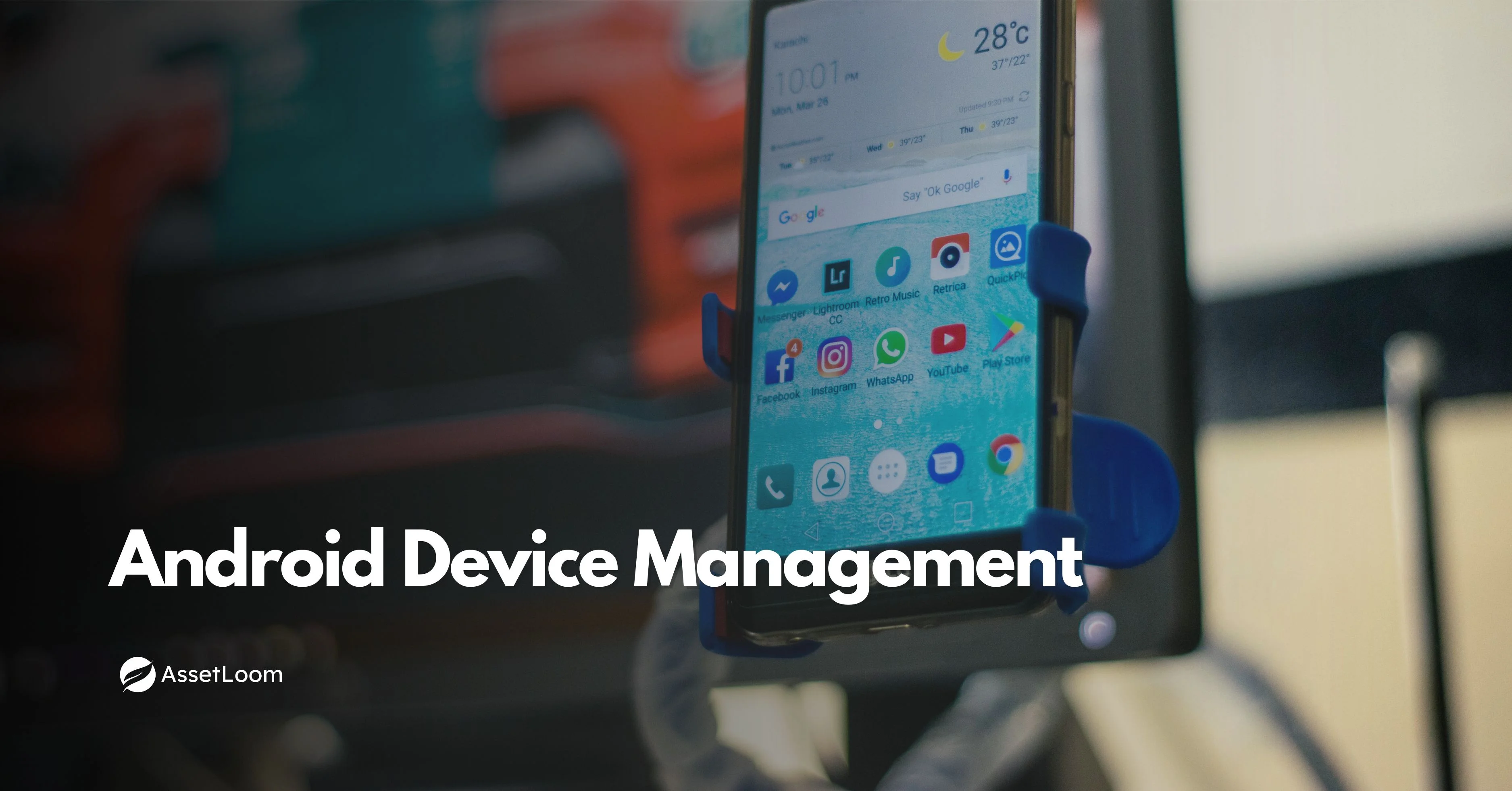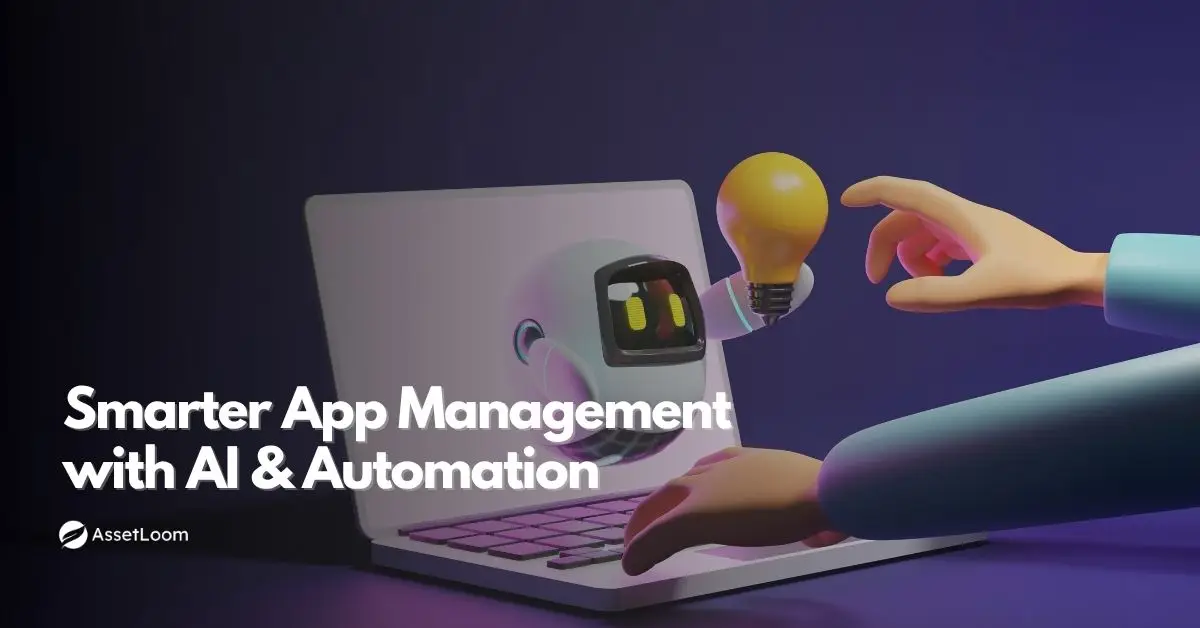Software License Management Solutions for BYOD Environments
Software license management solutions help organizations track and manage licenses in BYOD environments, ensuring compliance and reducing unnecessary costs.
Many organizations now let employees use their own laptops, phones, or tablets for work. This approach, often called BYOD (Bring Your Own Device), can lower hardware costs and support remote work. For IT teams, it also creates new challenges. It becomes harder to track what software is being used, how it’s being used, and if it aligns with license terms.
Licenses can easily go unused, duplicated, or misused across personal devices. An employee might install paid software on multiple devices or continue using company tools after leaving. These gaps increase costs and risk audit issues.
Software license management solutions help IT teams monitor usage, limit access, and recover licenses tied to personal devices. The following sections walk through specific use cases where these tools support license management in BYOD environments.
Learn about What is Software License Management?
Unauthorized Software Installation on Employee Devices
In BYOD environments, employees often install work-related software on their personal laptops or tablets without notifying IT. While this may seem harmless, especially when someone is trying to work efficiently from home or on the go, it creates significant challenges for license management.
Consider this example: An employee installs Adobe Creative Cloud on a personal laptop using a company-issued license. IT is unaware of this installation, and the device is not connected to any central monitoring system. Later, the same employee installs Adobe Creative Cloud on a second personal device. Now, the license is being used on two unmanaged endpoints, potentially violating license terms that limit usage to a single device per user.
In these cases, IT teams have no visibility into software installations, leading to potential overuse of licenses and non-compliance with licensing agreements. This can result in inflated software costs or issues during vendor audits, where more active installations are detected than the company has licensed.
A software license management solution addresses this challenge by:

- Scanning networks for unmanaged software installations, even on personal devices connected via VPN or Wi-Fi.
- Linking license usage to user accounts rather than just devices, so IT can identify if one user is consuming more licenses than allowed.
- Flagging unauthorized installations and sending real-time alerts when new software is detected outside of approved channels.
- Restricting access to software download pages and license portals unless the device complies with company policies.
For instance, an organization using AssetLoom can configure it to monitor Adobe license usage at the user level. If an account is tied to multiple device IDs that are not on the approved list, AssetLoom can trigger an alert to IT and prompt a review before further installations are allowed.
This level of visibility enables IT teams to maintain control in BYOD environments while allowing employees to use their own devices responsibly.
Difficulty Tracking SaaS Licenses Used on Personal Devices
Many companies use Software as a Service (SaaS) tools for tasks like communication, project management, and file storage. These tools often have user-based licenses, meaning the license is tied to the user account, not the device. This setup can cause problems in BYOD environments, where employees use personal devices to access the tools.
For example, a company may provide employees with access to Microsoft 365, which includes programs like Word, Excel, and Teams. Employees might log in to their Microsoft accounts on a personal laptop, tablet, and phone. While Microsoft 365 allows users to access their account on multiple devices, keeping track of who’s using the licenses across all devices can become difficult.
If an employee leaves the company and doesn’t log out of their account on their personal devices, the license could remain active, leading to unnecessary costs. Similarly, if an employee uses more devices than the license allows, the company risks violating the terms of the agreement.
Software license management solutions help by:
![]()
- Tracking software use based on user accounts, rather than just devices, so the company can see who is using the license and from which devices.
- Flagging overuse of licenses when a user accesses a SaaS tool on more devices than the license permits.
- Providing alerts and reports that show where the software is being accessed and by which user, helping IT teams manage licenses more effectively.
- Integrating directly with SaaS providers, so license usage can be monitored automatically, making it easier for IT to stay on top of compliance.
For example, using a solution like AssetLoom, IT teams can track which devices employees use to access Microsoft 365. If a user exceeds the device limit or continues to use the software after leaving the company, the system can alert IT so they can take action.
By having a clearer view of who’s using what, IT teams can prevent wasted licenses and make sure the company stays compliant with its agreements.
License Overuse from Multiple Devices Per User
In BYOD environments, employees often use multiple personal devices for work such as a laptop, smartphone, and tablet. While this flexibility is great for productivity, it can also lead to license overuse if employees don’t realize that many software licenses are limited to one or two devices per user.
For example, an employee might install software like Microsoft Office or Adobe Creative Cloud on their laptop and their phone. If the software license allows for only one device per user, the company could be paying for extra licenses that aren’t being used efficiently. In some cases, the employee might continue using software on personal devices even after switching to a new laptop or phone, leaving licenses unused but still active.
A software license management solution can help by:
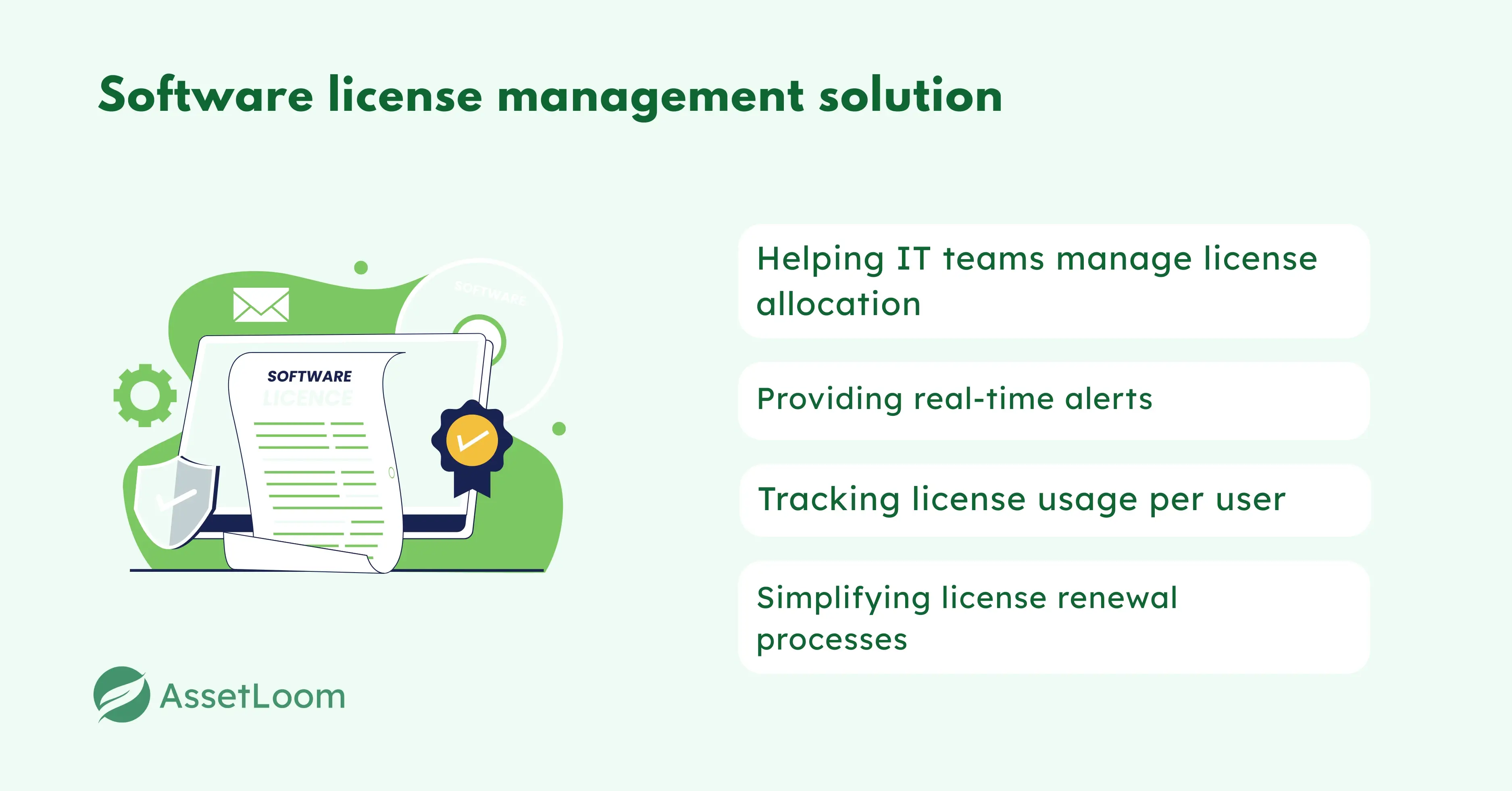
- Tracking license usage per user, regardless of how many devices they are using. IT can see if a single user has exceeded the allowed number of devices for a specific license.
- Providing real-time alerts when a user exceeds the device limit or when a license is being used in a way that violates the agreement.
- Helping IT teams manage license allocation by identifying underused software or unused devices, which can be reallocated or reclaimed.
- Simplifying license renewal processes, as IT can identify which devices are tied to each active license and which ones need to be deactivated.
For instance, if a company uses a solution like AssetLoom, it can track each employee’s device connections and show how many devices are associated with their license. If a user exceeds the limit, the system can alert IT, who can then decide whether to reallocate licenses or remove the excess devices.
This helps companies avoid unnecessary software costs, ensures licenses are being used properly, and allows IT teams to maintain compliance with licensing terms.
License Recovery After Offboarding BYOD Employees
When employees leave a company, there are often many things to consider returning equipment, revoking access to systems, and ensuring that any software licenses tied to the employee are recovered. In a BYOD environment, this process becomes more complicated since the employee may have installed software on personal devices that are not in the company’s direct control.
For example, consider an employee who used a personal laptop and phone to access company software like Zoom or Salesforce. When they leave the company, IT needs to make sure that all licenses associated with that employee are properly deactivated. If the employee doesn’t properly log out or return software access, the company could continue paying for unused licenses or risk violating licensing agreements.
A software license management solution can streamline this process by:
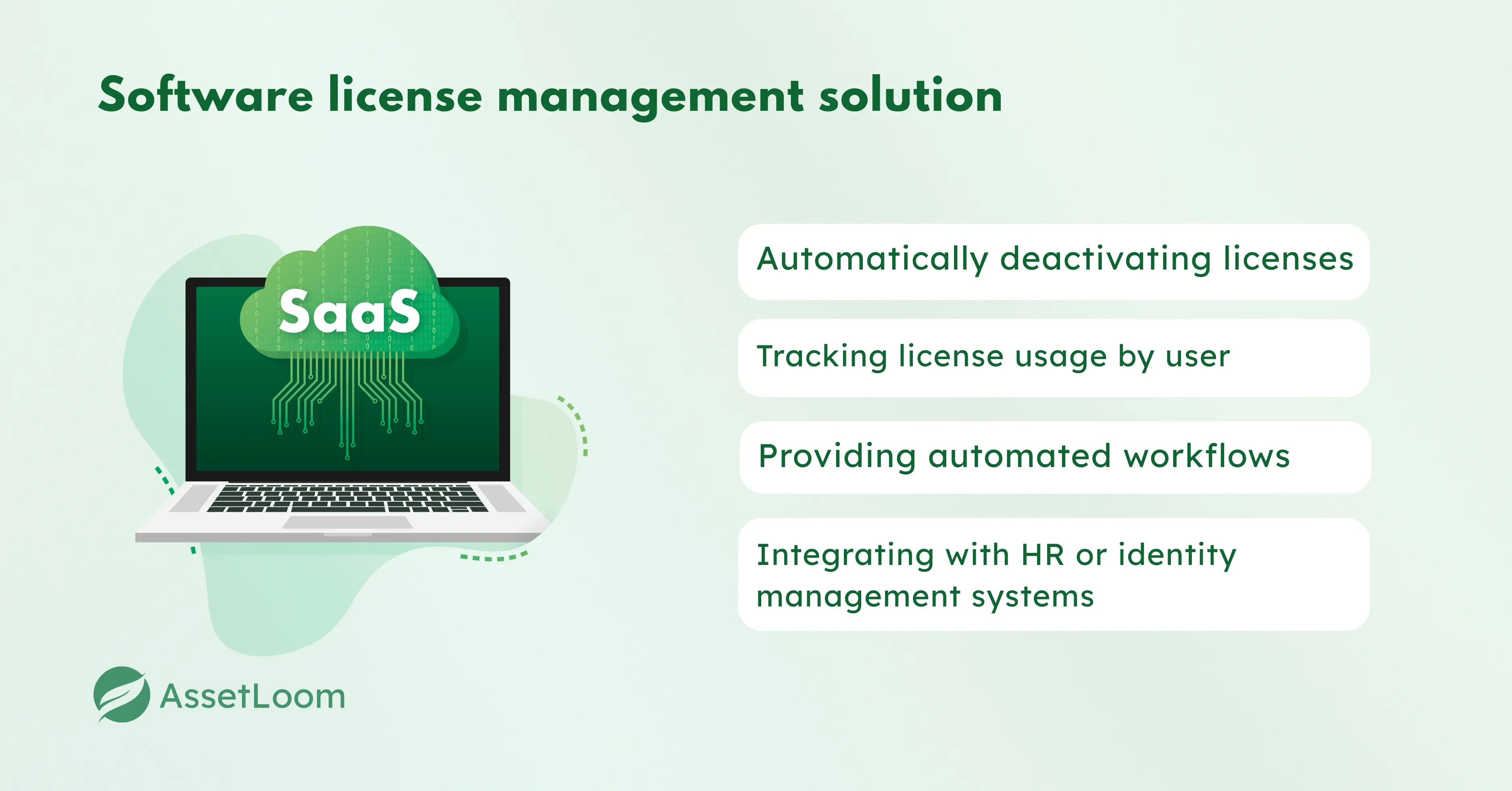
- Automatically deactivating licenses when the employee’s account is offboarded from the company system. This can include revoking access to company software and cloud services.
- Tracking license usage by user, so IT can identify all devices linked to the employee’s account and remove them from the license pool.
- Providing automated workflows that prompt IT to reclaim or reallocate licenses as part of the offboarding process, reducing the risk of oversight.
- Integrating with HR or identity management systems, so that license recovery happens as part of the employee’s offboarding steps, ensuring no licenses are missed.
For example, when an employee leaves a company using a platform like AssetLoom, the system can automatically flag all licenses tied to that employee’s account and begin the recovery process. IT is alerted to remove the user from active license lists, ensuring that licenses are freed up for other users or reclaimed by the software vendor.
This makes it easier for IT to manage software licenses, avoid unnecessary renewals, and keep license usage in line with company needs.
Preparing for License Audits in BYOD Scenarios
Software license audits are an inevitable part of managing software in any organization. Vendors frequently conduct audits to ensure that companies are compliant with licensing agreements. In a BYOD environment, these audits can become more challenging, as it’s harder to track which devices are using which licenses. The lack of visibility into personal devices makes it easier for mistakes to slip through, leading to compliance risks and potential fines.
For example, a company could be using a variety of software products such as Adobe, Microsoft 365, and specialized project management tools. During an audit, the company may be asked to provide an inventory of all devices using these tools. In a BYOD setup, employees might be using these tools on personal laptops, phones, and tablets that are not directly connected to the company’s inventory system. If IT cannot account for these devices accurately, it risks reporting more licenses in use than they have actually purchased, leading to audit discrepancies.
A software license management solution helps by:
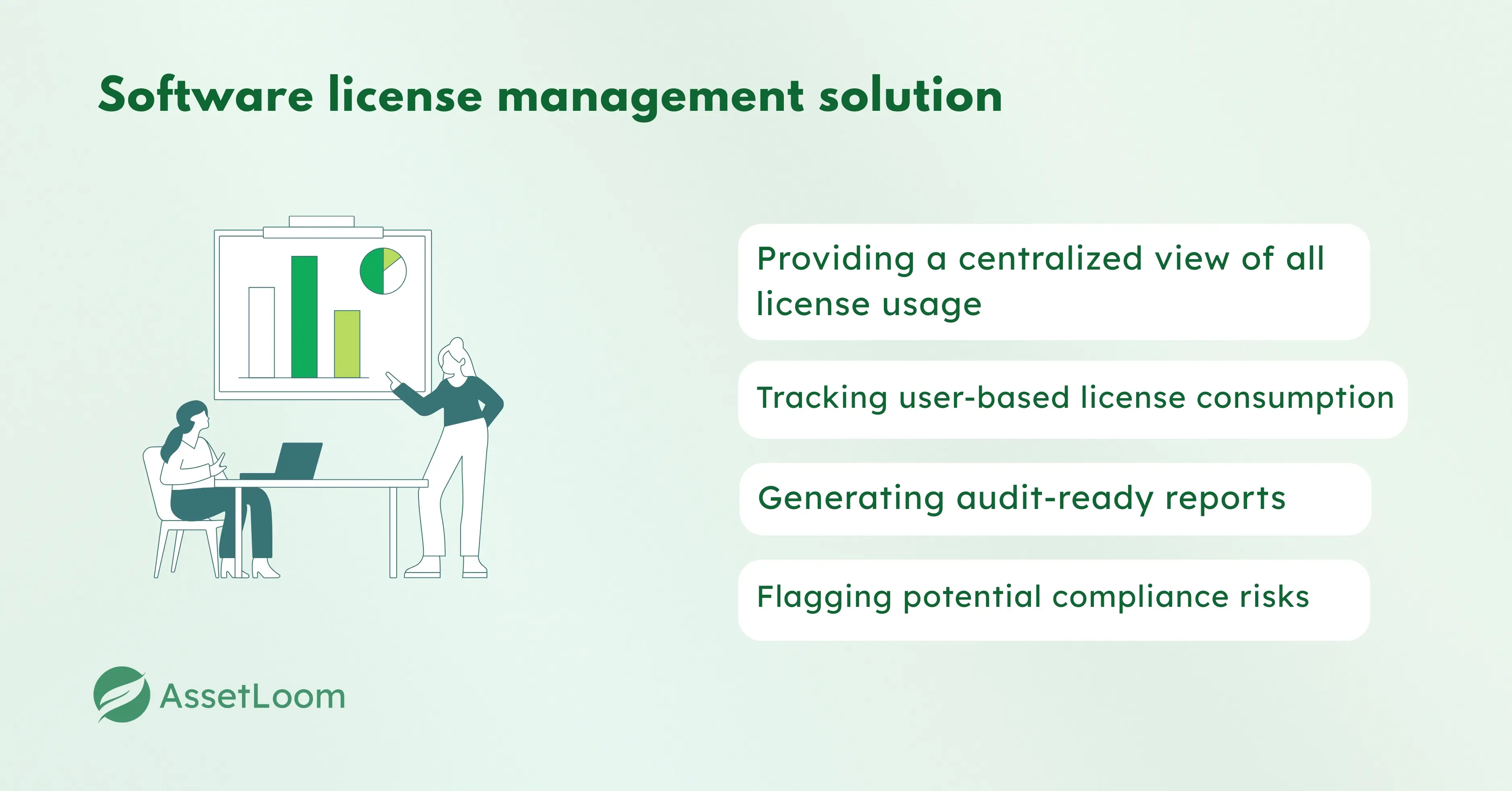
- Providing a centralized view of all license usage, including that accessed from personal devices. IT can see which employees are using which software, and on which devices, ensuring they have accurate data to report during an audit.
- Tracking user-based license consumption across multiple devices, so it’s clear who is using a license and how often, even if the device is personal.
- Generating audit-ready reports that show all software usage, making it easy to demonstrate compliance with licensing agreements. These reports can detail the number of active users, device usage, and whether any licenses have been overused.
- Flagging potential compliance risks by alerting IT to discrepancies in usage, such as if software is being used on more devices than allowed.
For instance, using a solution like AssetLoom, IT teams can quickly generate a list of all devices linked to each user’s software account. This makes it easier to respond to vendor audit requests, as the company can provide clear, accurate data on license usage, even for personal devices.
By maintaining a detailed, up-to-date record of all software usage, companies can better prepare for audits, reduce the risk of compliance issues, and avoid costly fines.
Managing software licenses in BYOD environments presents unique challenges, but with the right tools, IT teams can stay in control. Software license management solutions help track usage, prevent unauthorized installations, and simplify the recovery process when employees leave.
By linking licenses to user accounts, monitoring software installations, and generating audit-ready reports, these tools ensure efficient use of software and help maintain compliance. With the right system, IT teams can confidently manage licenses in a flexible work environment.
Related Blogs:
Top 5 Software License Management Software Solutions Compared
How to Pick the Best Software License Management Tools for Your Business

Related Blogs
Subscribe for Expert Tips and Updates
Receive the latest news from AssetLoom. right in your inbox
